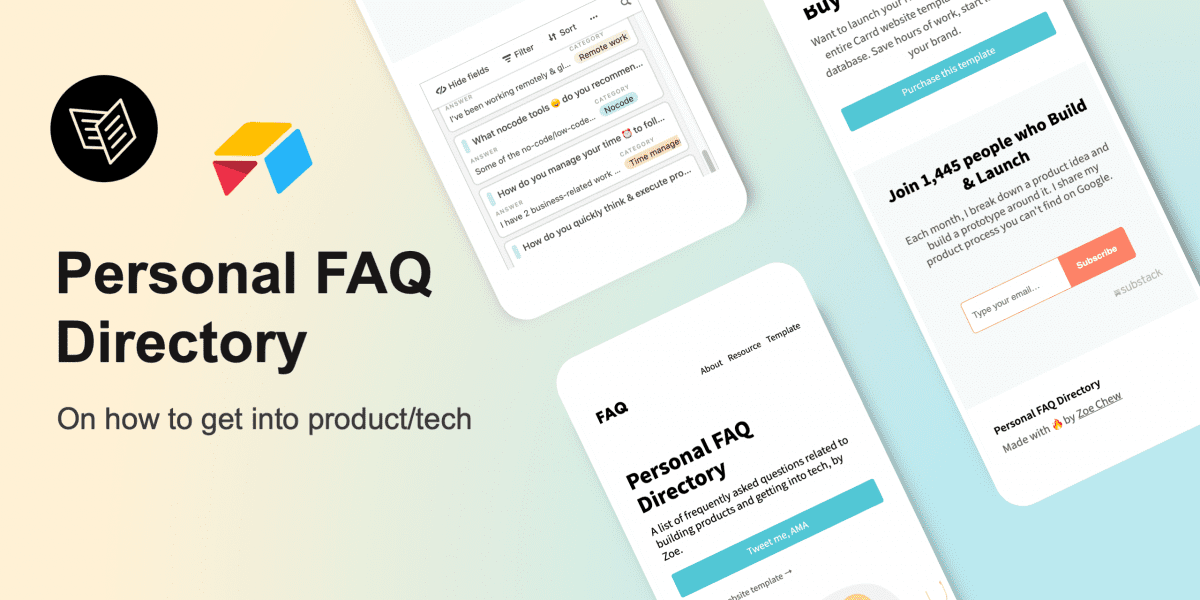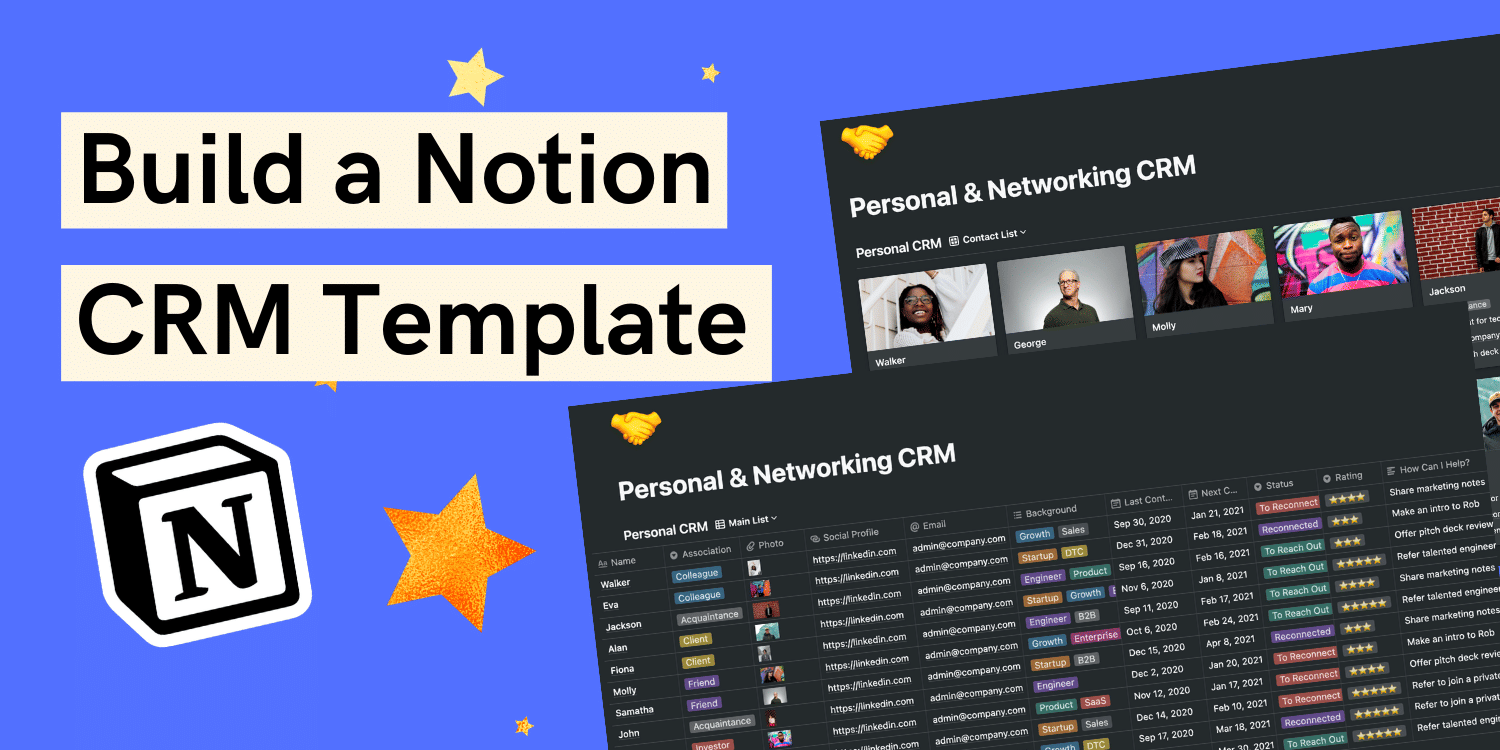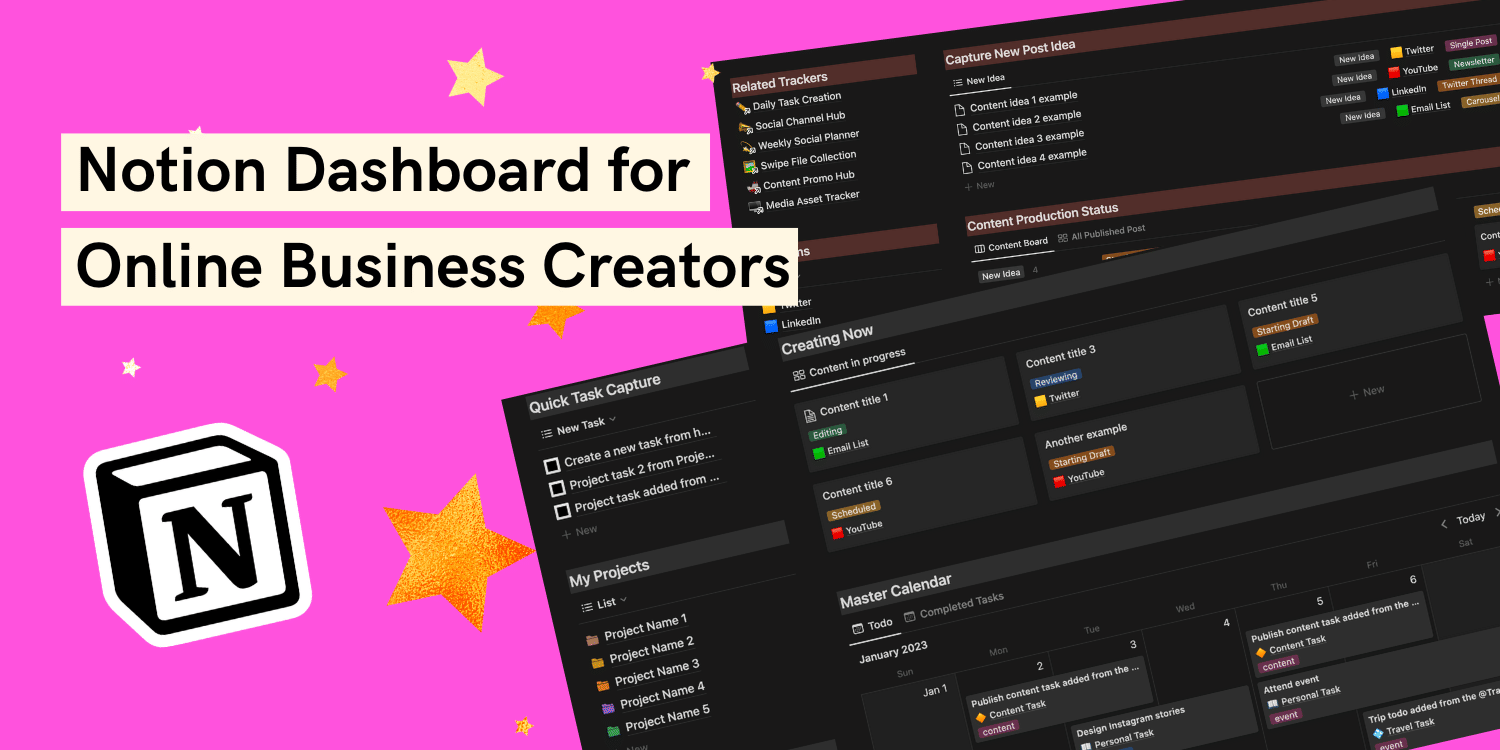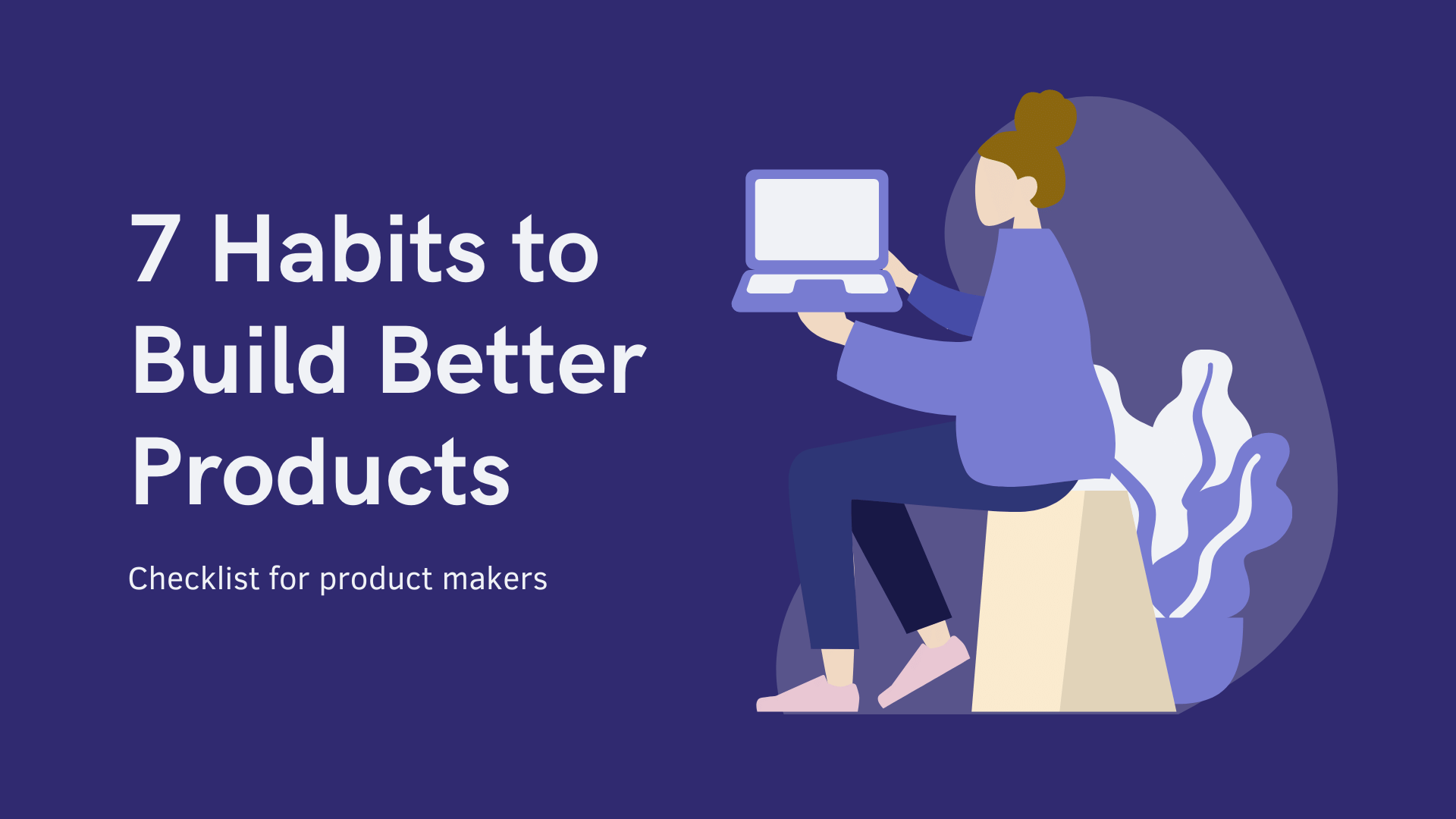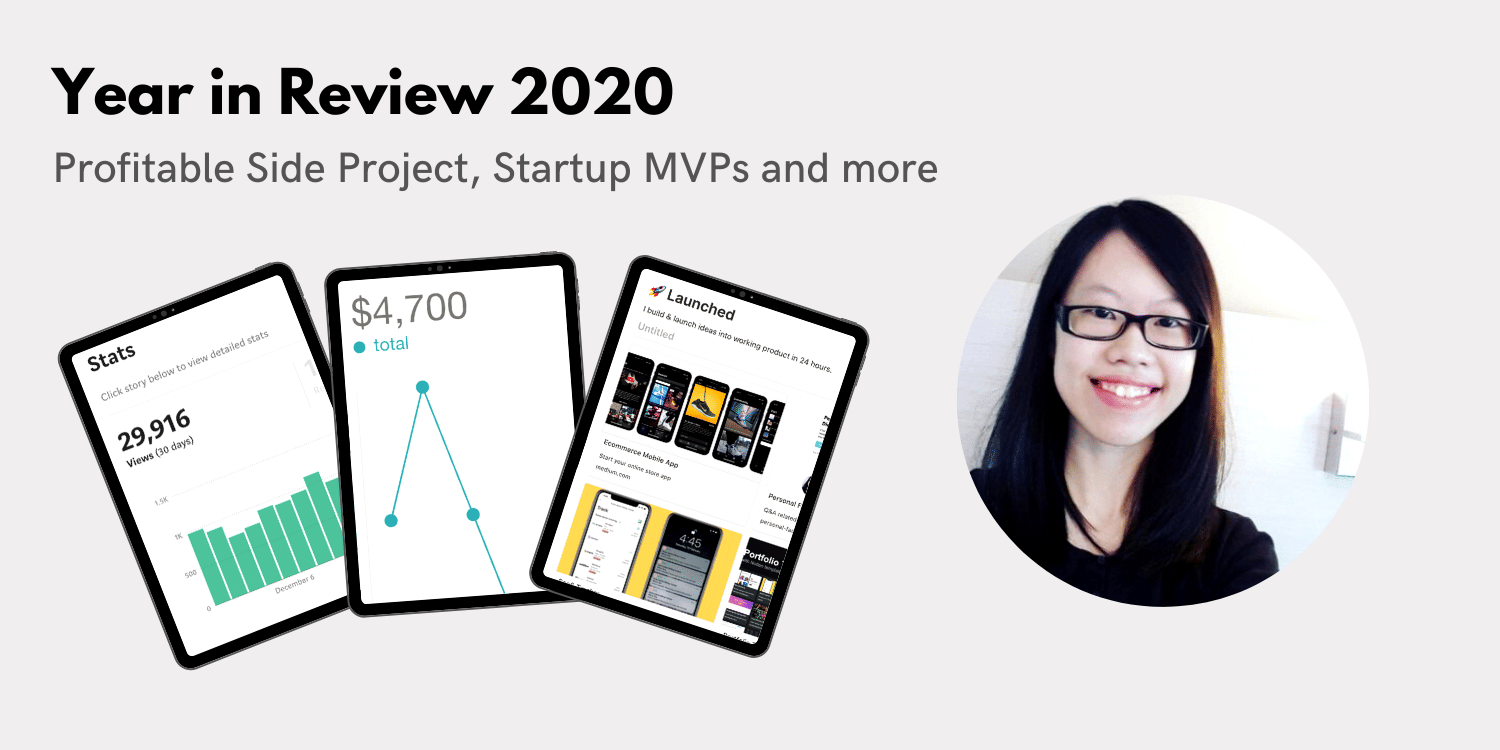Note: This article is part of my toolkit newsletters↗️ where I share resources about building things. Join me 🙂
As a product builder↗️, I built micro tools to solve my own problems. For example: article tool, event app, meal box app, finance tracker, SaaS tracker, and habit tracker.
I’ve been building in public, therefore, I often receive DMs who reached out for advice on how to transition into tech; how to start a consulting business; and how to build & launch products.
I decided to curate this FAQ and answer all of them in a public directory. Hope you will find some ideas (not advice) if you’re looking to start a similar path.

1. Idea and solution 🤓
I’ve been reached out by Internet people who are curious about my thought process related to product building, content marketing, remote career, etc.
I love sharing my experience on how I did it. Over time I realized there are frequently asked questions and I wanted to be more productive in helping others.

Therefore, I decided to solve this problem by building a Personal FAQ Directory
- Batch similar questions and answer all of them in 1 place
- Avoid repeating myself on writing the same answer
- Provide thoughtful answers and scale this effort
- When someone asks FAQ, share a direct link with the long answers
To begin, I list down the parts I want to build
- A landing page to introduce the concept
- AMA button (if people have additional questions)
- Frequently Asked Questions
- Newsletter signup form
- Filter by category (Career, Product, Marketing, Remote Work)
👉 Check out Personal FAQ Directory
2. The toolkit🔨
Here are some of the no-code tools that I use to design, build, and launch the landing page, FAQ list, and email signup form.
Carrd
A simple and fully responsive page builder. I build the Personal FAQ homepage using Carrd. Instead of buying a custom domain for a random project, I published the site using a free .carrd.co URL.

Airtable
A spreadsheet hybrid database creation tool. I use Airtable to create the FAQ table which includes a list of Questions and Answers. Then I embed the Airtable database on the FAQ homepage.

Substack
A newsletter tool and content publishing platform. I use Substack to embed the newsletter signup form on my FAQ directory website.

DrawKit
A free vector illustrations site. I use this site to search for free graphics that I can add on the FAQ homepage.

👉 Check out Personal FAQ Directory
3. Building the FAQ Directory 🚀
Once I’ve mapped out my problems, solutions, design ideas, product features, and nocode tools, I begin to work on the design and build the product. Here’re the key steps that I went through:
(1) Create the homepage using Carrd
The main section includes a logo, links, copy, a free graphic from DrawKit, and a personal Bio section.
I also created a “Tweet me, AMA” button for users to ask additional questions publicly via Twitter, so I can collect these Qs and answer in this FAQ directory.

(2) Add the FAQ database using Airtable
I created a database in Airtable to include a list of frequently asked questions about getting into product and tech. Once I’ve finished writing the FAQ content, I embed the Airtable on the Carrd page by creating a new section.

You can also search the FAQ by category (Career path, Product launch, Remote work, etc.) that interests you:

👉 Check out Personal FAQ Directory
(3) Allow people to buy the FAQ Directory template
I added a “Purchase this template” button that links to a Gumroad page to handle the payment. Upon purchase, customers can copy the full Carrd website, design, Airtable FAQ list — and setup tutorial in the PDF.

(4) Add the newsletter signup form using Substack
I created a simple signup section to collect newsletter subscribers using Substack. Once users enter their email, they will start receiving product tutorials (like this one) in the future.

[1] Find me on Personal Site / Twitter / LinkedIn 🔥
[2] In case you miss out, I can send my upcoming toolkit to your inbox — Click here to join my newsletter 💌
[3] Check out Personal FAQ Directory 👉
Full list of Personal FAQ (Text Version)
This is a text-based version of the FAQ content on how to get into the product and tech industry. Alternatively, you can go to the Personal FAQ Directory
Why did you choose product building (and not software engineering) 👩💻 to get into tech?
I was a digital marketer and wanted to pivot my career into tech (1) to work with product companies and (2) start a startup.
Product building immediately came to mind because it allows me to build startup MVPs, validate ideas, find product/market fit, and eventually develop further into a tech company.
By building a portfolio of product work, I was able to position myself as someone who understands technology products and clients tend to reach out to me based on my portfolio.
In other words, I never planned to become a software engineer or land a tech job. But learning to code/no code and transfer these skills into product/company building is my North star.
How did you learn nocode or product building? 😻
In the beginning, I started by hacking some tools and building something for myself.
I started with WordPress, Airtable, and Carrd and built something simple: personal website, music tech directory, and job board — just to get familiar with product design and fast prototyping.
My approach is to use what I already know to build what I need. I focus a lot on building (not learning) and only learn when it has immediate next steps, i.e. to execute something. For that reason, I don’t have any good recommendations for nocode courses.
How do you build 💪 the confidence to launch something publicly?
To me, the pain of not releasing stuff constantly is *extremely* painful than the “fear of not being good enough”.
Whether it’s a blog post, app, public goal or project, I think of it as 1 vs. 0 where I focus more on hitting my “launch” or “publish” cadence: getting it out there and staying consistent with the plan.
I love to think about getting it done in a minimum viable way, which is better than done perfectly.
You can always iterate your work as you gain experience in building and launching things.
How do you handle client projects with far timezones? 🌍
I’ve been working remotely & globally with far timezone locations (12 to 15 hours difference) and I’m based in Kuala Lumpur, Malaysia. I think far timezones aren’t an issue if the companies have a solid understanding of global remote work operation.
We often use collaboration docs to “work together” such as making a decision, brainstorming and prioritizing. Even if we’re not in the same location, we still get things done productively.
In a remote work environment, I find it productive to combine both synchronous and asynchronous communication. I.e., Combine video and written communication — which is documenting tasks, meeting agenda, strategic planning, campaigns, contents and reporting.
I often think ahead and write things down in Google Doc and Notion to reduce back-and-forth emails and unnecessary video calls. It’s also helpful to keep things in 1 place so that clients and their internal team can access updates without any confusion.
What nocode tools 😄 do you recommend?
Some of the no-code/low-code tools that I use: Glide, Carrd, Zapier, Airtable, Sheets, Typeform, Stripe, Loom, RapidAPI, Parabola, Django framework, Coda, Notion, WordPress.
In terms of choosing the right tools, it’s important to understand what product you’re trying to build.
Does it require a payment gateway, user login, membership, database, etc.? Then, evaluate each no-code tool to see which one can help you get the job done.
How do you manage your time ⏰ to follow through all your projects and stay consistent?
I have 2 business-related work areas: (1) client services (2) selling digital products and at the same time re-investing these $ resources to start a NewCo.
During my spare time (usually weekends), I build fast prototyping, write content on Medium & Substack to build my audience, network and marketing.
In terms of time management, I would say: limit meetings, emails, back-and-forth replies unless they are work-related. Use time-blocking and each time block (morning, noon, evening) should have its sub-task.
Practice deep hours work and extend workweek sprint, until you get a project launched/done. Avoid splitting yourself into too many interesting ideas & be focused.
How do you quickly think & execute product in 24 hours? 🚀
Most of the product ideas that I came up with are related to my personal needs that I’m familiar with. I start by thinking about the problems I want to solve; what are the use cases and key functionalities of the app.
Once I understand who the users are, what values they will get from the product, I will plan the app design & flow before I get into the “actual” building process.
Then I gather a list of tools that can help me achieve the prototype in one day.
How did you learn to code? 💻
Self-learning through Udemy, documentation, and YouTube. I learned to code in Python and Django using the book “Python Crash Course” and Django documentation.
To practice my coding skill, I decided to document my #100DaysOfCode Challenge on Twitter (early 2019). It motivated me to code at least 1 hour a day. But halfway through my learning, I decided to put my “limited” coding skills to test.
I used Django to build an app “I Lazy To Read” and launched on Product Hunt #1, Lifehacker, and tech blogs featured in 7 countries.
Why did you decide to transition from marketing into tech? 👋
I started my solo founder career in digital marketing, selling services to local SMB clients (i.e. paid Ads, content strategy & marketing training). I reached a point where I was burned out and did not enjoy my work. I was looking for something new.
I’ve always had a strong interest in the tech sector. Having no relevant tech skills, I decided to learn about product & coding.
I eventually transitioned into tech by working as an independent consultant, helping tech startup clients across US/APAC with product communication & user base discovery strategy.
My work is still related to marketing but now I’m able to touch on the aspect of product strategy and software startups which I love.
Any advice on how to launch on Product Hunt #1 successfully? 🏆
I wrote a detailed post on how I launched on Product Hunt #1 and the traction I received in the first 2 weeks.
How can I get started in a Product career? 🤓
Technically speaking, I’m not working in the Product role. I started product building as a personal project while working as an independent contractor in product communication & user base discovery strategy helping early-stage tech cos.
I perform marketing & community content strategies for product companies.
In terms of getting a job related to Product position (Product Management, Product Design, Product Marketer, and Product Developer) — I’m not the best person to answer this.
Being physically in SEA ☀️, how do you build a global network and end up working across US/APAC clients remotely?
I credit this to personal branding, content marketing, and networking. In the beginning, I build projects, share my work publicly, build a Twitter audience, and create resources to keep myself accountable in product building.
Another goal of my public sharing is to meet like-minded product people, founders, and operators. Surprisingly, these efforts opened doors for my global remote career: I received a lot of inbound leads who came across my content and wanted to reach out for an opportunity to work together.
Since then, I’ve become a big believer in globally distributed work and business opportunities regardless of where you’re physically based.
Networking, starting conversations, and building quality connections are important parts of the equation. It’s not about building the number of networks but the quality conversation in those relationships.
What strategy do you use to reach 1,000 💌 newsletter subscribers?
When I started the “Build & Launch” newsletter, my goal was to document my process about building things and keep myself accountable.
I’ve been focusing on 3 things: Content, Context & Connection. Make your content valuable, helpful, and useful. Tell good stories about your visions and the work you do.
Build conversations around your writing & thought-process. When something is good and it resonates with your audience, people will share your work. My main distribution platform is Twitter, Medium & Substack.
